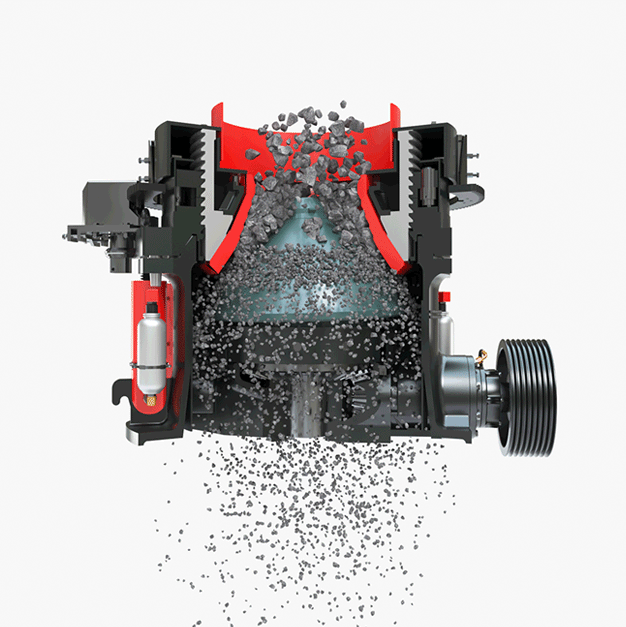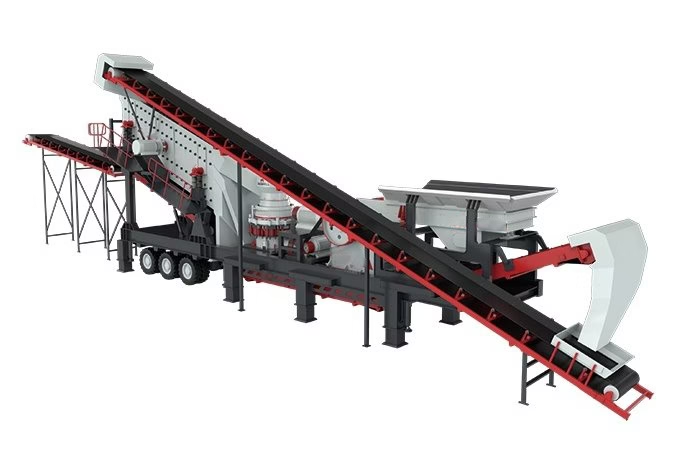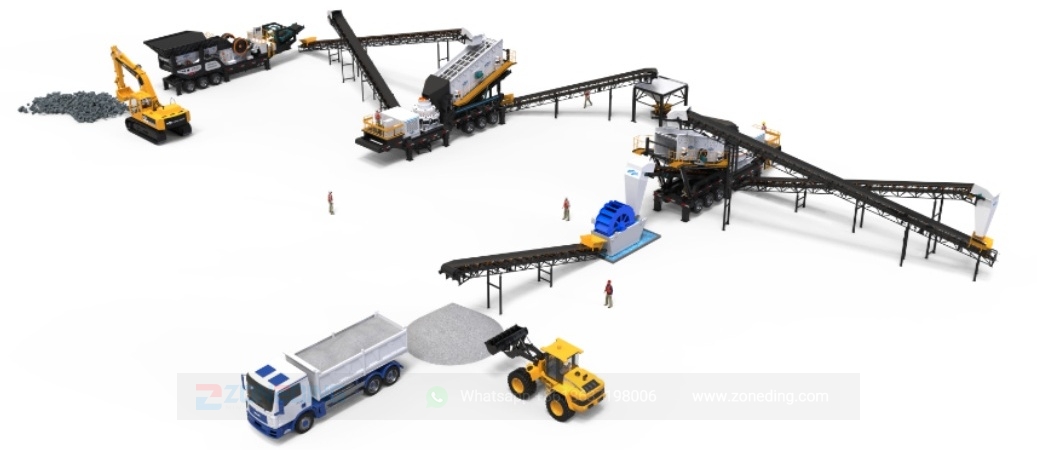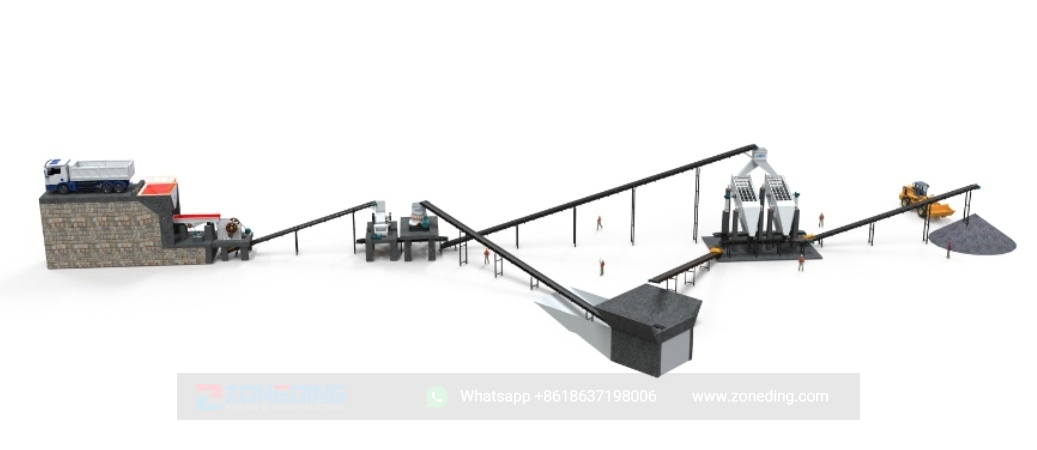Search the whole station Crushing Equipment
Cone crusher is usually used as secondary or tertiary crushing stage. It is characterized by robust structure, excellent productivity and simple operation.
Cone crusher is ideal for crushing different stone and rock in quarry, mining, road construction, etc. It can also provide aggregate for concrete batching plant. Zoneding mainly provides the following four types of cone crushers to meet your different needs in aggregate size.
A cone crusher is a type of compression crusher used to break rock by squeezing it between a moving and a stationary piece of steel. The moving piece is an inverted cone, called the mantle, which gyrates inside a fixed, cone-shaped bowl, called the concave or bowl liner. As rock falls into the chamber, it is repeatedly squeezed and broken into smaller and smaller pieces until it is small enough to fall out the bottom. It is a powerful and efficient machine for producing fine to medium-sized aggregate.
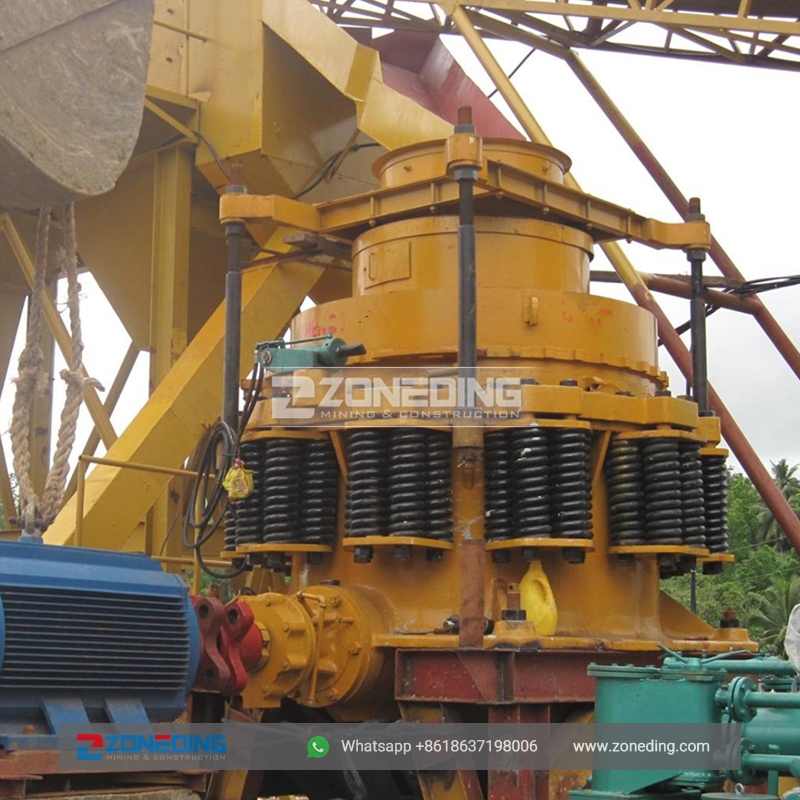
You will find cone crushers working hard in the middle and final stages of a crushing and screening plant. Their primary job is not to handle massive, quarry-run boulders. Instead, they take the smaller rock that has already been broken down by a primary crusher, like a jaw crusher. Their main purpose is to reduce this material further, down to sizes like 10mm, 20mm, or 40mm gravel, and to create a superior, cubical shape. This cubical shape is very important for making strong concrete and asphalt.
A cone crusher is the key to quality and efficiency. A primary jaw crusher gives you size reduction, but the product can be flaky and inconsistent. The cone crusher refines this material. It’s the perfect machine to prepare feed for a VSI (Vertical Shaft Impactor) if you are making sand. A cone crusher can take 40-100mm material and turn it into a consistent 5-20mm product. This high-quality feed allows the VSI to work at its best, focusing on shaping rather than just breaking. A plant with a well-run cone crusher will produce a superior product and dominate the market.

Cone crushers have evolved over the years, but they mainly fall into a few categories.
At ZONEDING, we focus on these modern hydraulic systems for their superior performance and ease of use.
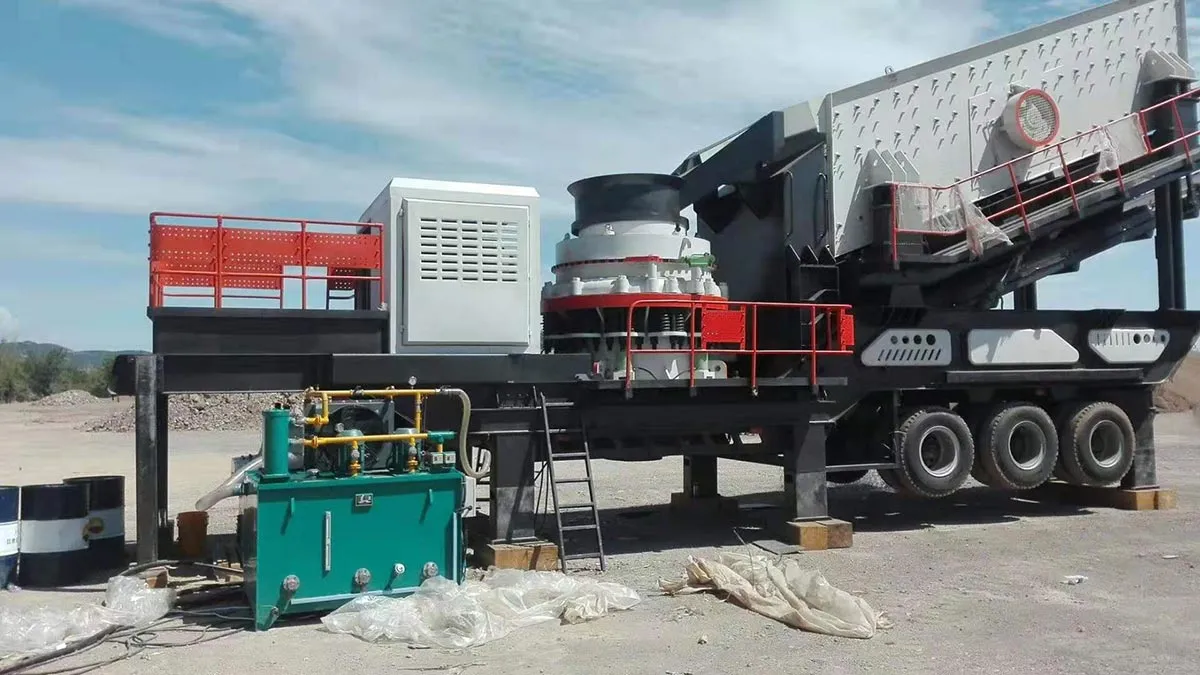
You will find cone crushers in any industry that needs to produce high-quality, consistently sized aggregate.
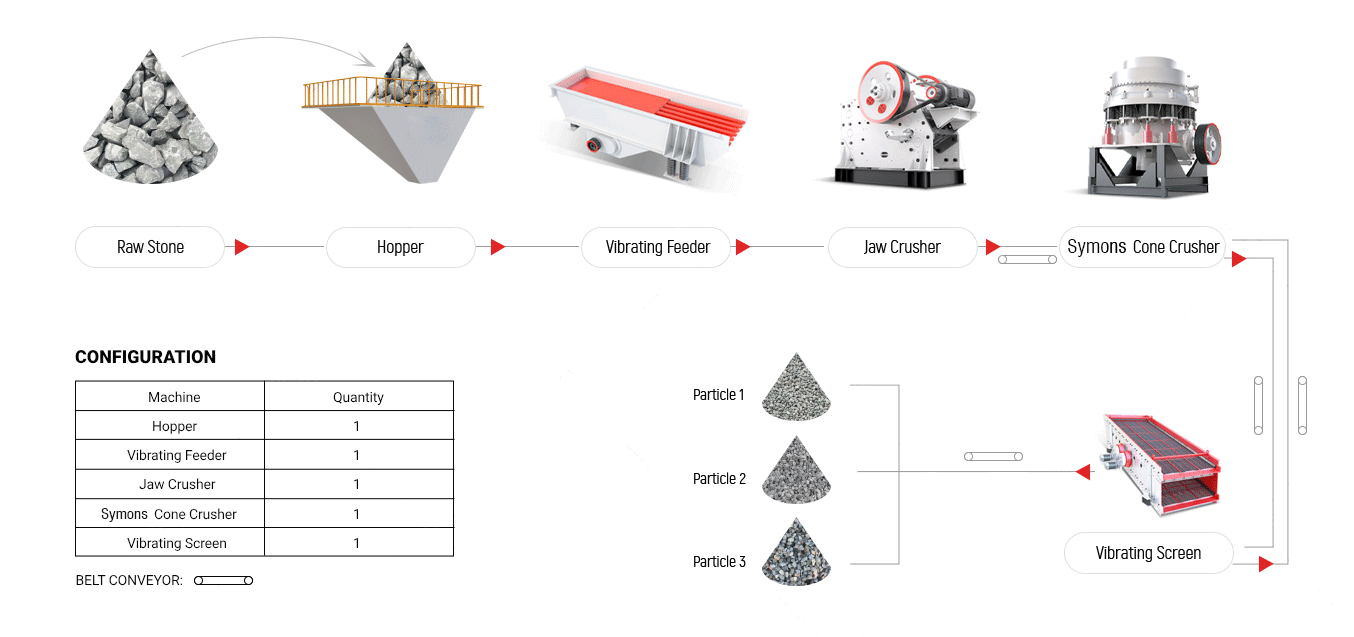
Zoneding provides comprehensive cone crushing and screening solutions. Whether you are establishing a new venture and require plant construction, or aiming to enhance your existing crushing plant, Zoneding can cater to all your requirements. Dig deeper into various crushing solutions by exploring the subsequent sections.
Capacity:100-450TPH
Output Size:5-38mm
Configuration: wheel-mounted chassis, vibrating feeder, cone crusher, vibrating screen, etc.
Features: strong mobility, low transportation costs.
Advantages: High capacity; Various output size.
Capacity:100-450TPH
Output Size:5-38mm
Configuration: wheel-mounted chassis, vibrating feeder, cone crusher, vibrating screen, etc.
Features: strong mobility, low transportation costs.
Advantages: High capacity; Various output size.
Capacity:100-450TPH
Output Size:5-38mm
Configuration: wheel-mounted chassis, vibrating feeder, cone crusher, vibrating screen, etc.
Features: strong mobility, low transportation costs.
Advantages: High capacity; Various output size.
A cone crusher is built for toughness. It excels at crushing medium-hard to extremely hard and abrasive materials. If a rock is tough, a cone crusher is usually the right choice for the secondary and tertiary stages.
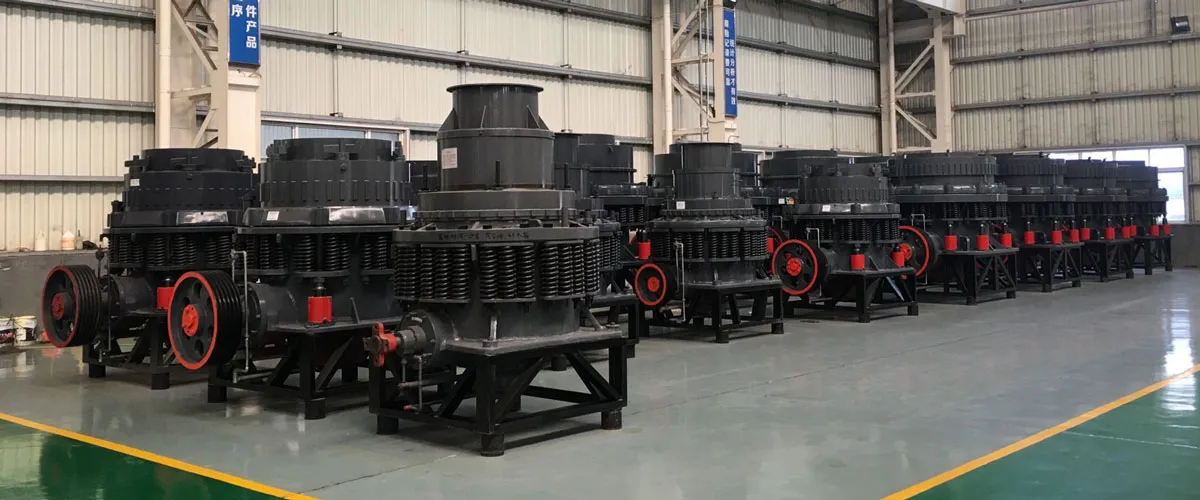
Jaw Crushers Applicable Material:Quartz, granite, basalt, limestone, river stone, marble, shale, iron ore, copper ore, gold ore etc. A Jaw crusher is mainly used for medium-sized crushing of various ores and…
Sand making machine is suitable for soft or medium hard and very hard ore materials with hardness not higher than 320 Pa. Also. It has the characteristics of stable and reliable work, easy maintenance, and a high sand production rate. The…
Impact crusher excel in primary crushing of rock. Stationary and mobile plants are available. Replacement of wearing parts is simple due to the hydraulic folding of the housing components. A variety of models are available | Get the fre…
The vibrating feeder (vibratory feeder) is suitable for bulk and granular materials such as limestone, calcite, dolomite, barite, talc, gypsum. And also quartz stone, river pebble, granite, basalt, construction waste, iron ore, coal, slag, …
loading…
已经是到最后一篇内容了!
We use cookies to ensure that we give you the best experience on our website. If you continue to use this site we will assume that you are happy with it.
Privacy Policy
